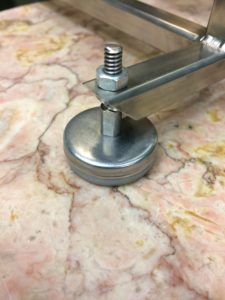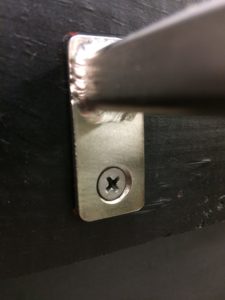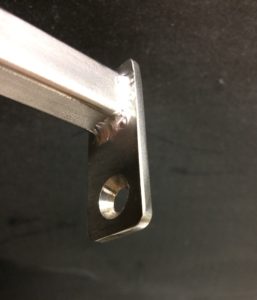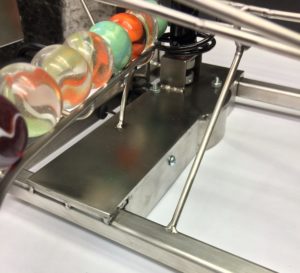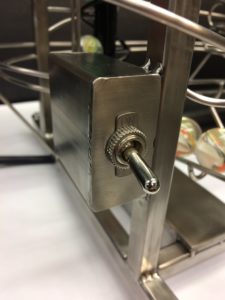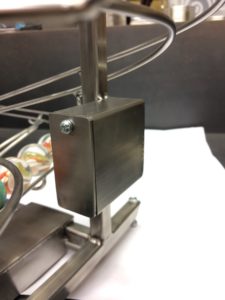I received a call the other day from an interested collector. He was really pleased with my sculptures he’d seen online, and he wanted me to create a commission for him.
“It all sounds great, Tom,” he said. “Now, how do we go about setting up a commission? How does that work?”
After the call I thought, “I’ve answered that question a number of times, and while there are always unique points for each collector’s piece, some of that info is the basics of any commission. If I was doing a better job on my web site, I’d be of much more help to my collectors.”
So I’m helping, right here and now. I’m typing all of this up, and not only is it going on my blog and being announced to the subscribers of my mailing list, I’m updating my web site Commissions page so that I can better serve my collectors.
Q: How does a commission start, Tom?
A: Step one, have some fun seeing what I can do! You’ve obviously become interested in my work. You’ve seen it on Instagram or Facebook, or you’ve surfed here from the results you got on a web search, or maybe you saw a video on YouTube and then went to my site. Thanks for checking out my art! Now that you’re on the site, one of the things that would help you out is to check out the Gallery page. There you can see photos and videos of some of my other work and get an idea of my style and see some of the cool elements, sizes and themes that make up my rolling ball sculpture. While you’re doing that, make a few notes about what you like or dislike. Do you like lots of audio elements? Maybe it’s the wiggly track, or the tall coil, or spirals, or the collector that holds four balls before it tips and sends them on their way. Have fun taking it all in and noting your favorites!
Q: In addition to the fun stuff, I need it to mount to the wall (sit on a table, run all day, or…?). Is now the time to mention that?
A: Yes, indeed. Take a minute to come up with some of your requirements. Is it a free-standing piece that will sit on a table? Maybe it mounts to a wall. Would you prefer a manually loaded sculpture? How about the frame shape – square, rectangle, box, pyramid, circular? Do you want it to be particularly quiet, or do you like lots of audio elements?
Q: Do I need to let you know the size and where it will be displayed?
A: Yes, please. Size is very important, so having some dimensions for height, width and depth is great, even if they are rough estimates. If the location is particular, say you have a case set up for it already, or it fits between existing architecture, let me know, providing photos if you have them. It’ll help us get started in planning and in determining a budget.
Q: How much will my sculpture cost? Would knowing my budget help you plan the sculpture?
A: Each piece is different, though there are general guidelines, which is why I ask for size and your particular list of enjoyable elements you’d like to have on your rolling ball sculpture. If you already have a budget in mind, indicating that will help us plan your custom artwork. Check out my Commissions page on my site and you’ll get some other ideas of what would best suit your tastes and desires.
Q: What’s the best way to send my information to you?
A: Once you have a basic list of the type of sculpture you would like, you can either head over to my Contact page and either send me a message or call me with your information. If I’m not able to reply immediately, I will get back to you as quickly as I can.
Q: How does the money part work, Tom?
A: I handle the commission payment process the same as many other artists. To secure the commission I require a 50% non-refundable down payment. The balance of the payment is due upon completion of your amazing rolling ball sculpture, prior to its delivery. Packing and shipping are extra. You will be able to watch the creation process of your artwork via several social media channels, unless you have a special request such as a surprise gift for someone. In any event, I will still produce photos and short videos of the progress and share them with you. You will be able to see photos and video of the completed sculpture prior to your acceptance and payment so that you are certain you are happy with it.
Q: What methods of payment do you accept?
A: To this point, my collectors have been happy to pay me with Paypal or, in the case of a local pickup, cash. Should you have another preferred method, I will be happy to discuss it with you.
Q: Do you accept credit cards?
A: Yes, you can pay with a credit card via Paypal.
Q: When can I expect to receive my fantastic rolling ball sculpture?
A: I can give you an estimated arrival date after knowing more about your desires for your sculpture.
Q: Can you build me one exactly like the one in the movie “Fracture?”
A: While I can create a stainless steel piece of the general size and tone of the sculpture in the movie “Fracture,” I do not create exact copies of another artist’s work.
Q: I like cars (or motorcycles, sailing, astronomy, or…?). Can you do one with a theme around that?
A: I sure can! Send me your thoughts in your initial contact, and we’ll see what we can’t dream up!
Q: I have a dentist office (or optometrist, therapist, bank, hotel, or…?). Can you create a sculpture that highlights or distinctly announces my business?
A: I certainly can! Let me know your thoughts on how you would want your business to be accentuated with your sculpture, whether it would be through physical wording, or by more by creating a themed piece, such as the tooth-shaped frame I made and used actual dental instruments as part of a sculpture for a dentist’s office.
Any other questions? Please let me know! Just send me a message or call, and I’ll be happy to speak with you about creating a truly unique and mesmerizing rolling ball sculpture just for you! I look forward to hearing from you.

